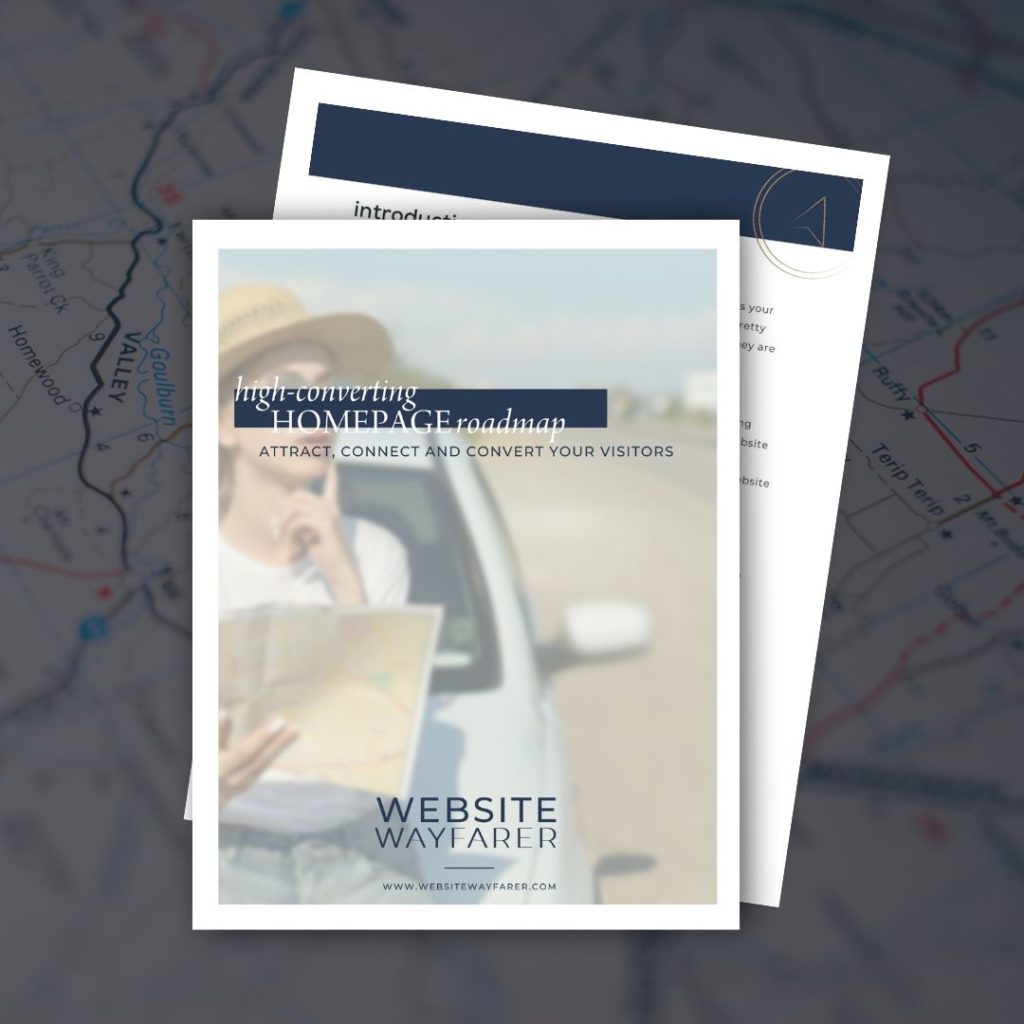One thing you may be wondering about your website is “How can I come up first in the Google search results?” If you want to be found online, search engine optimization, or SEO, is a must-have. Many business owners are easily intimidated by the thought of SEO or end up doing nothing at all for fear of messing something up on their site, but there are some basic optimizations you can do to ensure Google and other search engines (yes, there are others) are finding your site.
What is SEO and Why is it Important?
Everyone wants better SEO, but do you really know what that means?
Think about the number of times a day you open Google to search for something. I’d venture to guess some days that I have searched Google hundreds of times for a variety of topics. In its simplest form, search engine optimization helps your website come up in someone’s search results when they search for terms related to your business or services.
For example, a website design company in Charlotte, NC would clearly like for their website to come up on the first page when users type into their search box “Website Designers in Charlotte” or similar phrases. Spoiler alert: Ranking for something this popular takes a lot of time and effort, so don’t be discouraged when you don’t immediately come up first for popular searches.
While that may sound simple, determining how to best optimize your website for keywords and key phrases can be both a complicated and daunting task. After all, there are plenty of SEO professionals who make a huge business out of it and rightfully so.
But just because some areas of SEO require special expertise doesn’t mean you can’t take incremental steps to optimize your website. And these simple tasks can go a long way for getting you in good with our friends at Google so you can start coming up in search results too.
Google cares about your content. Providing regular, high-quality (ie. not spammy), relevant information on your website is one of the best things you can do to best optimize your SEO.
Start optimizing your website for SEO with these 10 tips:
1. TITLE TAGS
A title tag is just a fancy word for the title of your web page. Title tags are the clickable headline that displays on a search engine result and as the title on a browser tab. This should be a concise and accurate description of your page and its content. For example, in the images below you’ll see the title that comes up in the search result in blue, then the title in the browser tab that is identical.

The title tag is often a user’s first interaction with your website and can determine whether someone chooses to click on your link from the search results. Always use a unique, easily recognizable title and try to incorporate a keyword relevant to your business in your title.
PREVIEW HOW YOUR TITLE LOOKS IN SEARCH RESULTS
2. META DESCRIPTIONS
In simple terms, a Meta Description is the concise summary of the content of your webpage. These are most often the descriptions you’ll find underneath the title link in a search result as shown below.
While these aren’t taken into account directly to search engine rankings by Google, often these descriptions impact whether a user chooses to click through and view a result or bypass when scrolling through. Therefore also affecting how often google chooses to show your link in future search results. In short: these small, but mighty page descriptions have a big impact on your overall SEO!


Be sure to include any words or phrases relevant to your business in your meta descriptions as this will help you rank for those related searches.
Depending upon the website platform you use, you’ll add the meta description in a different way.
3. BODY CONTENT
Remember when I said content was the most important thing on your site for SEO?
Well, let me reiterate. The more content you have for readers to consume, the more you’re going to come up in the search results. That’s why blogging is a vital component of any basic SEO strategy, yet so many businesses ignore this basic step because they don’t think they need a blog or no one is reading it. Let me tell you, Google is reading it and recommending it to users based on their search parameters. And those users can become your next paying customer!
The more often you provide ongoing, regularly updated content on your site, the better you’re going to find yourself in the search results. Think about how many times you search for something and MOST of the top search results are blog posts.
Determine what your potential clients would be searching for, and provide content relevant to those topics. Even one post a week can go a long way to boost your SEO strategy so don’t ignore this vital component of your SEO strategy.
4. CONTENT STRUCTURE
Much like your average website user, Google loves website organization. So your website should have a clear content structure with easy-to-follow navigation that helps users find their way around the site in a concise manner. A website without a content structure and clear navigation are like a map without street names; it looks nice but it’s very frustrating to find your way around.
Each of your pages should have ONE H1 or Header 1 title that describes the overall content of the page. For example, an About page H1 might be something like ABOUT XYZ COMPANY. Then break down the rest of your page into Headers that make sense with your overall content structure. Header 2 should be used for main section titles, then Header 3, and so on.
Think back to grade school when you did an outline for a book report and you had to break your content down into headings and subheadings. Do this same thing on your web pages.
Each content management system or website platform varies in the method to designate your headings, but each makes it very straightforward in their respective text editor by delineating Header 1, Header 2, and so on.
GET THE FREE SEO OPTIMIZATION CHECKLIST
5. URL/PERMALINK STRUCTURE
The URL or permalink is the domain that shows in your browser for each website page.

Your URL or permalink structure is a simple but extremely important factor in your website design and SEO strategy. And I see SO many people make this very common mistake.
Your URL structure should be as simplified as possible, easy to read for both humans and search engines, and give a clear understanding of what the page is about. Make it concise and descriptive, do not include dates or random numbers in your URLs, and be sure to include hyphens between words.
For instance, if you have a page called About XYZ Company your permalink should be www.companydomain.com/about-xyz-company. The URL should be as descriptive as possible without using a lot of unnecessary words.
6. INTERNAL LINKING
Internal linking is the process of linking your existing website pages. This establishes your site map and helps both users find their way around and search engines make their way through your site.
Imagine a search engine crawler like a spider…it needs a web to crawl throughout. So if it gets to a page and there are no links to follow, it stops and moves on to another website. Internal linking also provides your visitors with additional browsing options, keeping them on your website longer. And keeping your users on your website longer leads to better SEO.
7. ALT TEXT & IMAGE FILENAMES
Another very common mistake I see people making is ignoring or overlooking their image alt text. Visual graphics look great to humans, however search engines don’t have eyes and aren’t great at understanding them yet.
Your alt text gives context to each image on your page or website and is not only used for search engines, but also for screen readers for the visually impaired, so it’s a vital piece in achieving web accessibility.
The alt text should simply explain what the image is in brief terms. In addition, your image file names should be descriptive of the image. Rather than using a generic name like DSCF123.jpg or screenshot-01-01-2018.jpg, name the image file something relevant. If you sell computer equipment and your image is of an Apple Macbook for example, you want to name it something like gold-apple-macbook.jpg.
Think about what your website users would be looking for and name your images and alt text appropriately. Describing your images accurately will not only help increase your basic SEO but will also increase the chances your images appear in Google Image searches as well.
8. EXTERNAL LINKS/BACKLINKS
Backlinks are a valuable ranking factor for SEO, mainly because they give your site clout and show that outsiders are endorsing your content. Backlinks tell search engines that your content is worth linking to therefore having a positive effect on your search ranking.
There’s plenty of research showing that backlinks have some of the strongest influence on Google’s search ranking, however, the site linking to you has an effect on just how much influence. Having a large reputable site like the New York Times link to your site would have a more valuable effect than having a local blog site link to it. You can get more information on building backlinks from Backlinko’s Backlinks Guide here.
9. PAGE SPEED
Not only do website users prioritize page load times, search engines do too. Google and other search engines not only want users to find exactly what they are searching for, but they also want them to find it as fast and efficiently as possible.
A slow page speed also means it takes search engines longer to crawl your site, therefore they crawl fewer pages. If you have a small site with only a few pages you may not think this is important, but think again.
Page speed also affects how many users leave your site within the first few seconds of visiting. And the more people leaving your site, the more your page ranking is negatively affected because it tells Google they didn’t find what they were looking for.
Use a tool like Google’s PageSpeed Insights tool to discover how quickly your site loads and get insights on how to improve your site and page speed. Hint: many times it has a lot to do with your images. Optimizing your images for the web before uploading will do wonders in improving load times!
10. MOBILE-RESPONSIVENESS
With an estimated 60% or more web users performing searches on their mobile devices, Google has begun to move to a mobile-first indexing approach. This means that Google will primarily use the mobile version of your site content to rank your pages and display in search results.
For this reason and more, you want to ensure your site is mobile-responsive, meaning the primary content is the same across both mobile and desktop. So if you have a mobile site that’s currently different from your desktop website, it might be time to start thinking about a website redesign.
FIND OUT IF YOUR SITE IS MOBILE-FRIENDLY
Take these basic measures on your website to begin improving your SEO and learn more about SEO from these additional resources:
View your website like a search engine: https://zeo.org/seo-tools/seo-browser/
Moz – https://moz.com/beginners-guide-to-seo
Google – https://support.google.com/webmasters/answer/7451184?hl=en
WP Beginner – https://www.wpbeginner.com/wordpress-seo/
Yoast – https://yoast.com/academy/free-seo-training-seo-for-beginners/




